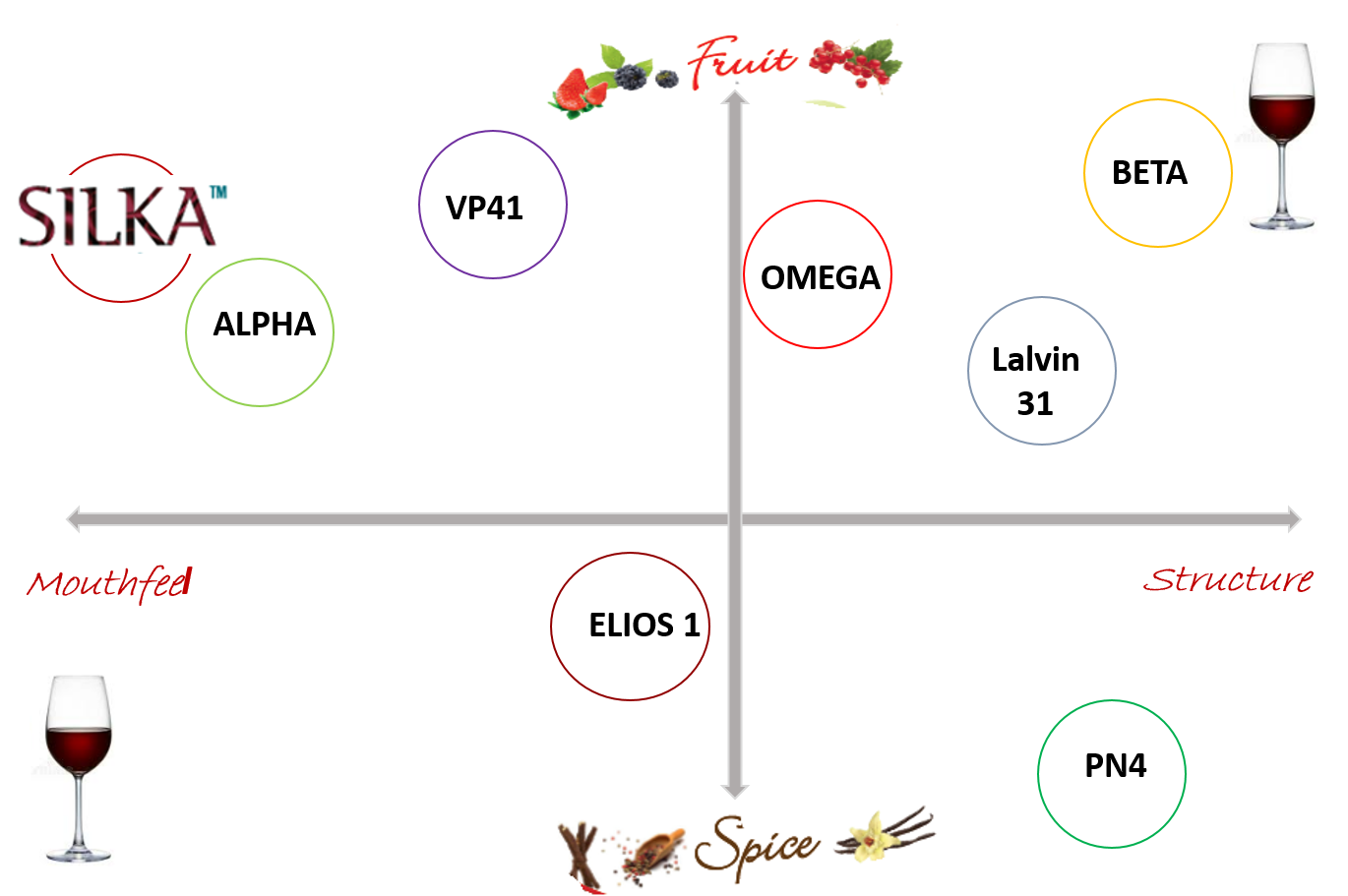
Invite silkiness into your red wines
Publiée le 01/08/2019 16:11Today, it is fully acknowledged by wine professionals that malolactic fermentation is an essential stage in the winemaking process and that certain wine bacteria play a key role in shaping the sensory profile of wines.
After a comprehensive selection process, Lallemand Oenology proposes a new selected natural wine bacteria contributing to the sensory profile of red wines: SILKA™
Malolactic fermentation: a complex process
Malolactic fermentation is a process where malic acid is converted into lactic acid in wine through the action of wine lactic acid bacteria. This process helps to reduce and soften the acidity in wine, mainly in red winemaking, although sometimes used in white winemaking too.
Although there has been conjecture over the contribution of MLF to the sensory properties of wine (Davis et al. 1985), recent research has provided greater insight into specific sensory changes associated with the growth and metabolic activity of malolactic bacteria in wine.
It is clear that different strains of malolactic bacteria may increase or decrease the intensity of certain wine aroma and flavor attributes, and such changes are strain dependent (Bartowsky and Henschke 1995, and Bartowsky et al. 2011). In addition to deacidification, the flavor attributes imparted by MLF can be described as buttery, lactic, nutty, yeasty, oaky, sweaty and earthy. MLF may also impact fruity and vegetative aromas, as well as the mouthfeel of wine (Henick-Kling 1993, Henick-Kling et al. 1993, and Laurent et al. 1994). Importantly, the net impact of MLF on wine sensory properties will depend on factors such as bacterial strain characteristics, varietal aroma intensity of the wine and vinification techniques employed (Henick-Kling 1995).
https://www.winemak-in.com/en/articles/572/wine-bacteria-and-sensory-profile
Today, it is also fully accepted and acknowledged by wine professionals that malolactic fermentation (MLF) is an essential stage in the winemaking process and that certain wine bacteria play a key role in shaping the organoleptic profile of their wines.
After a comprehensive selection process, started in 2006 and aiming at answering the particular warm-climate winemaking conditions, Lallemand Oenology proposes to winemakers a new selected natural wine bacteria contributing to the sensory profile of red wines: SILKA™
A wine bacteria perfectly well-suited to warm-climate regions
Isolated in the Spanish wine region of La Rioja in collaboration with the ICVV (Instituto de Ciencias de la Vid y del Vino), SILKA™ is naturally suited to the warm climate wine conditions: it resists to high alcohol degrees while demonstrating a regular fermentation kinetics and protects the organoleptic cleanliness of wines. It indeed does not have the ability to produce biogenic amines and does not release ethyl-phenols precursors (animal notes), due to its negative cinnamyl-esterase activity.
Unique properties to soften tannins
Due to its unique sensorial properties, SILKA™ confers structure and volume to red wines while reducing herbaceous notes, bitterness and astringency. SILKA™ allows red wines to fully express their fruity aromas and to rapidly reveal silky tannins.
Tested and approved for its performance and its sensorial properties
Used in numerous wineries in Spain, France and Italy since 2017, winemakers’ comments are always very favorable: SILKA™ allows to produce red wines with varietal fruity aromas and favors balanced structure and nice roundness in wines, with a long aroma persistency.
Also suited to malolactic fermentations in contact with oak
Due to its geographical origin, SILKA™ is also perfectly well-suited for conducting the malolactic fermentation in contact with oak. Wines inoculated with SILKA™ achieve better oak integration and demonstrate an elegant structure and a great aromatic freshness. After a few months, wines made with SILKA™ remain fresh and fruity whereas control wines show overripe fruity characteristics. Fruity esters analyses confirm these tasting results.

Unparalleled sensorial diversity of Lallemand wine bacteria
Lallemand Oenology offers a wide range of natural wine lactic acid bacteria, all confering particular sensory profile to red wines in terms of red fruit aromas, structure, mouthfeel or spicy aromas.

About Malolactic Fermentation: https://www.lallemandwine.com/wp-content/uploads/2015/10/Lallemand-Malolactic-Fermentation.pdf
About SILKA™: https://www.youtube.com/watch?v=Zq5VdPhq63U
About Lallemand natural wine lactic acid bacteria portfolio: https://www.lallemandwine.com/en/north-america/products/catalogue/wine-bacteria/


